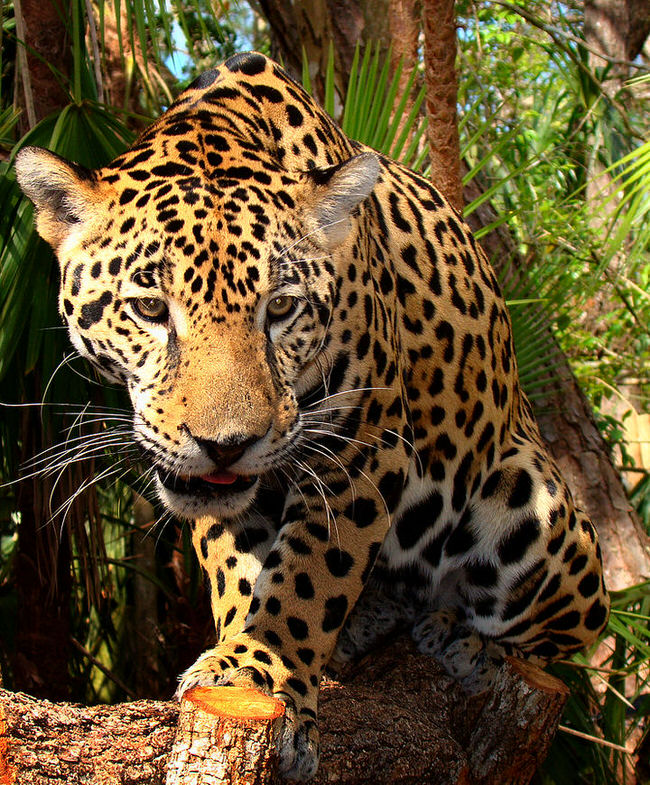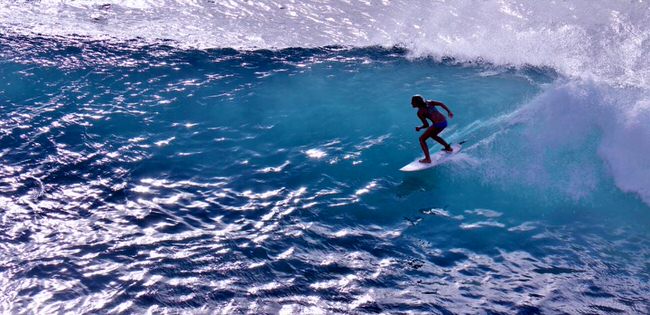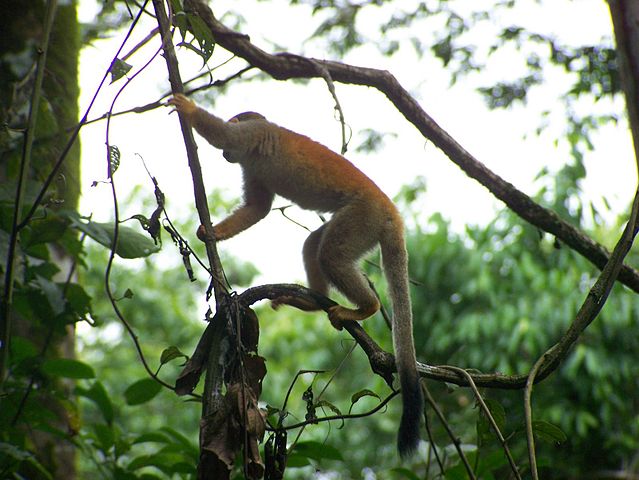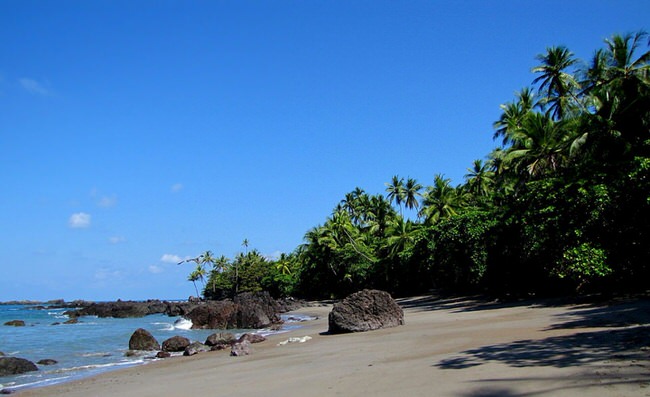
Manuel Antonio
There are countless hotels (mostly large expensive complexes), but also some inexpensive hotels and restaurants, on the way from Quepos to Manuel Antonio National Park. Based on the number of visitors who come here, this is the most popular national park in the country; based on its size, it is Costa Rica’s smallest. Otherwise, there is not much of interest in the area.
The 683-hectare park was established in 1972, just in time to rescue it from destruction through uncontrolled hotel and resort construction. The park features beautiful tropical beaches backed by thick forests, long narrow rocky points of land and – despite all the crowds that visit it – a wealth of animal life and a network of well-maintained paths. Visitors who want to enjoy the park have to acclimatize quickly to the high humidity. The average daily temperature throughout the year is 27°C. At the same time there is high humidity caused by the average annual rainfall of 8,000 mm, which is about 10 times the average in central Europe.
Drivers have to leave their cars at the southern end of the street and enter the park on foot, as do those who arrive by bus. It is important for hikers to bring enough drinking water along, as well as sun cream and insect repellent.
To enter the park visitors have to wade through the mouth of the Quebrada Camaronera, which, depending on the time of year, can be ankle to knee-deep. The path to the beaches and to Punta Catedral leads over an isthmus, a natural bridge (called Tombolo) made of alluvial sand.
To the northwest of the isthmus is a beach known as Playa Espadilla Sur, which is bordered by a patch of mangrove swamp. Southeast is Playa Manuel Antonio with its fine-grained white sand. This protected beach is the most popular one in the park and is also safe for swimming. Nearby, the remains of ancient semicircles formed of stone have been found. Archeologists think they may be the remnants of turtle traps once used by Indians.
The splendid view from Punta Catedral (Cathedral Point) stretches over the Pacific and takes in nearby rocky islands. It is worth the extra time and effort to hike further south to Playa Puerto Escondido, and to take the path through the forest to the 135-meter-high lookout point in the middle of the coastal jungle. This mirador (viewpoint) offers the best panoramic view of the park. It takes about one hour to walk here from Playa Espadilla Sur.
The Manuel Antonio National Park also provides first-time visitors a glimpse into Costa Rica’s animal world and, with a bit of luck, a nodding acquaintance with capuchin and howler monkeys, as well as other animals. Whether you will catch a glimpse of any of the 350 yellow titi monkeys in the park is another matter; they are shy and – in the park at any rate – in danger of dying out. The masses of tourists who visit the park leave them far too little room and make far too much noise, which results in a disturbance of the titis’ nesting habits.
Agoutis, on the other hand, are plentiful and may be easier to spot. The agouti is one of six types of American Rodentia, similar in their anatomy to rabbits. They are 40 to 60 centimeters long, but have small ears, paws that resembles hooves, and stiff bristled fur that ranges from reddish-brown to black. They eat roots, leaves and fruit and, much to the dismay of Costa Rica’s plantation managers, also help themselves to bananas and sugar cane. Sloths and peccaries, armadillos and coatis also live in the park, along with the quick raccoons seen on the ground and in the trees. Lizards, snakes and iguanas creep along the forest floor.
One floor higher, in the tops of the trees, 350 different types of birds make their nests. There are still even a few colorful parrots in the jungle. Large numbers of these birds have been trapped and smuggled out of Costa Rica to be sold for huge sums of money to supposed animal lovers and laboratories abroad. Brown boobies and pelicans are found close to the water. Crabs, coral, sea snakes and sponges present a sampling of the colorful underwater world of Costa Rica. There is a small coral reef, but the water is usually not clear enough for snorkeling or other underwater sports. The fish most often found along this part of the coast has an unlikely military-sounding name sergeant major. It has distinct verticle black stripes on its sides, and finds its way onto the menus of seaside restaurants, where it is generally served grilled.
The flora of the national park has much to offer. The manzanillo tree (“little apple tree” in Spanish) bears a small fruit similar to a crab apple. But the fruit, just as Adam and Eve discovered in the Garden of Eden, has its drawbacks. The manzanillo is poisonous! Its bark and leaves are toxic, and cause itching and burning when touched. Its wood can’t be used, not even as firewood, because the smoke it releases contains etheric oils that can damage the lungs.
The wealth of animals and plants in the Manuel Antonio National Park, its protected beaches, and what is probably most important, its proximity to the capital have assured a heavy flow of visitors since its opening.
Every year approximately 100,000 people come to the park. That adds up to 1,000 per day outside of the rainy season. The park’s administrators estimate that, ecologically, the park cannot sustain more than 300 visitors per day. In order to avoid the masses of tourists, it is best to arrive at the park very early in the morning, and, if possible, on weekdays rather than weekends. Better yet, visit the park during the rainy season. Special attention should be paid to personal belongings in the hotels and snack bars in the park, and on the beach.





